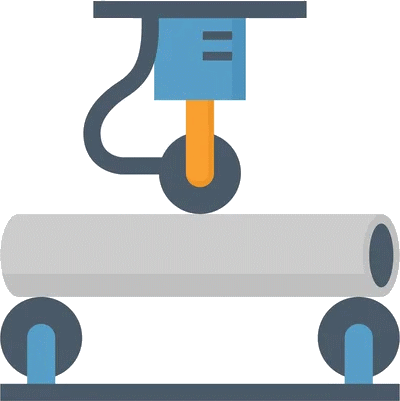ASTM Nondestructive Testing Standards
The ASTM Standards for Non-Destructive Testing provide guidance on appropriate methods and techniques to detect and evaluate defects in materials and objects without destroying the sample.
Such tests include radiographic, ultrasonic, electromagnetic (eddy current), X-ray, acoustic and tomographic techniques.
The detected defects are evaluated for possible rejection for not meeting the stated acceptance criteria. These non-destructive testing standards are of great interest to laboratories and a wide range of industrial companies to investigate the quality of a material and thus its suitability for its intended use.
Leak Testing Method
E2930-13(2021) Standard Practice for Pressure Decay Leak Test Method
E499/E499M-11(2017) Standard Practice for Leaks Using the Mass Spectrometer Leak Detector in the Detector Probe Mode
E2024/E2024M-11(2019) Standard Practice for Atmospheric Leaks Using a Thermal Conductivity Leak Detector
E1066/E1066M-19 Standard Practice for Ammonia Colorimetric Leak Testing
E479-91(2006) Standard Guide for Preparation of a Leak Testing Specification (Withdrawn 2014)
E427-95(2006) Standard Practice for Testing for Leaks Using the Halogen Leak Detector(Alkali-Ion Diode) (Withdrawn 2013)
E432-91(2022) Standard Guide for Selection of a Leak Testing Method
E493/E493M-11(2022) Standard Practice for Leaks Using the Mass Spectrometer Leak Detector in the Inside-Out Testing Mode
E498/E498M-11(2022) Standard Practice for Leaks Using the Mass Spectrometer Leak Detector or Residual Gas Analyzer in the Tracer Probe Mode
E908-98(2022) Standard Practice for Calibrating Gaseous Reference Leaks
E515-11(2022) Standard Practice for Leaks Using Bubble Emission Techniques
E1002-11(2022) Standard Practice for Leaks Using Ultrasonics
E1003-13(2022) Standard Practice for Hydrostatic Leak Testing
E1603/E1603M-11(2022) Standard Practice for Leakage Measurement Using the Mass Spectrometer Leak Detector or Residual Gas Analyzer in the Hood Mode
Liquid Penetrant and Magnetic Particle Methods
E709-21 Standard Guide for Magnetic Particle Testing
E1219-21 Standard Practice for Fluorescent Liquid Penetrant Testing Using the Solvent-Removable Process
E1208-21 Standard Practice for Fluorescent Liquid Penetrant Testing Using the Lipophilic Post-Emulsification Process
E1220-21 Standard Practice for Visible Penetrant Testing Using Solvent-Removable Process
E1418-21 Standard Practice for Visible Penetrant Testing Using the Water-Washable Process
E1210-21 Standard Practice for Fluorescent Liquid Penetrant Testing Using the Hydrophilic Post-Emulsification Process
E3022-18 Standard Practice for Measurement of Emission Characteristics and Requirements for LED UV-A Lamps Used in Fluorescent Penetrant and Magnetic Particle Testing
E1209-18 Standard Practice for Fluorescent Liquid Penetrant Testing Using the Water-Washable Process
E1135-19 Standard Test Method for Comparing the Brightness of Fluorescent Penetrants
E165/E165M-18 Standard Practice for Liquid Penetrant Testing for General Industry
E433-71(2018) Standard Reference Photographs for Liquid Penetrant Inspection
E125-63(2018) Standard Reference Photographs for Magnetic Particle Indications on Ferrous Castings
E1417/E1417M-21e1 Standard Practice for Liquid Penetrant Testing
E3024/E3024M-22a Standard Practice for Magnetic Particle Testing for General Industry
E1444/E1444M-22a Standard Practice for Magnetic Particle Testing for Aerospace
E2297-23 Standard Guide for Use of UV-A and Visible Light source and Meters used in the Liquid Penetrant and Magnetic Particle Methods
Reference.. ASTM International
 Image.. depositphotos.com
Image.. depositphotos.com
OTHER ASTM NDT STANDARDS
Part 1. Acoustic Emission Method
Part 2. Digital Imaging and Communication in Nondestructive Evaluation (DICONDE) + Editorial Review
Part 3. Electromagnetic Method
Part 4. Leak Testing Method + Liquid Penetrant and Magnetic Particle Methods
Part 5. Nondestructive Testing Agencies + Radiology (Neutron) Method
Part 6. Radiology (X and Gamma) Method
Part 7. Reference Radiological Images
Part 8. Specialized NDT Methods
Part 9. Ultrasonic Method